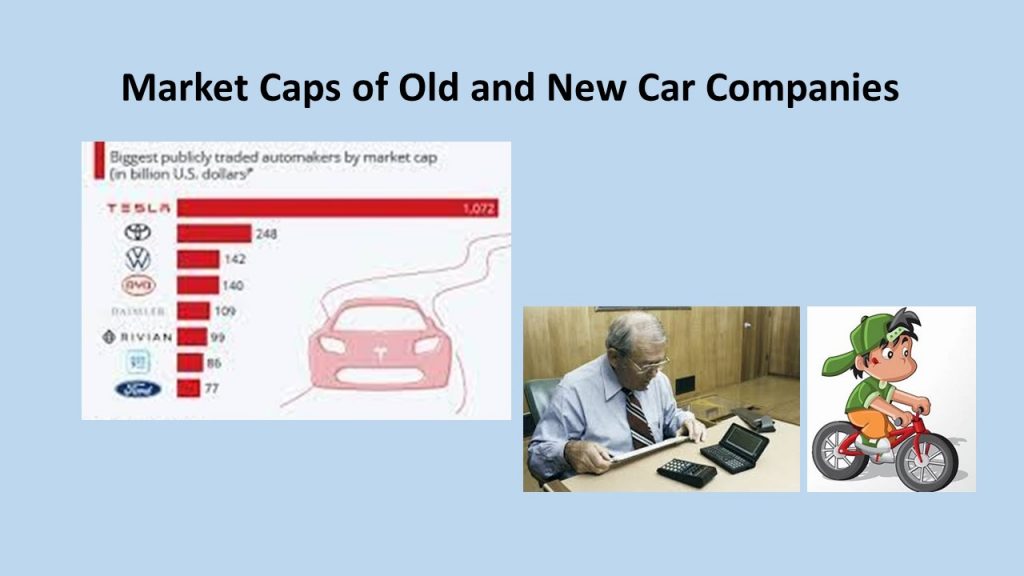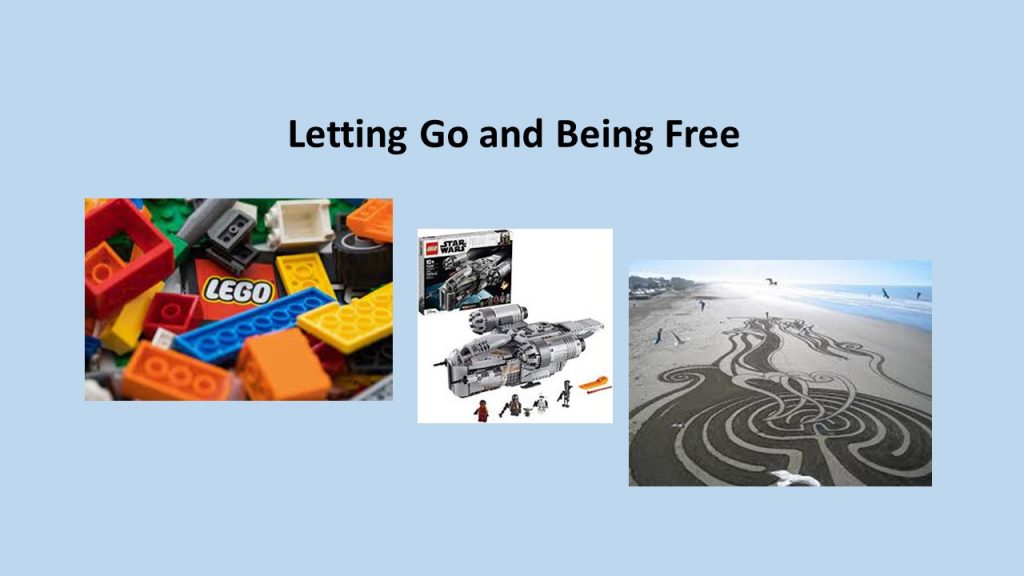130. Letting Go | 捨–得
– Musings of Dr. Jamie C. Hsu, 12.26.2021
Have you been wondering why Tesla is worth more than VW and Toyota with only a fraction of the car sales? Or why Rivian, an EV company with zero sales yet, has a market cap higher than GM and Ford? The major reason is the large old car companies have much more liability and old assets which are not relevant for the future mobility industry. The same thing can be seen and said about a lot of situations in our lives. If you don’t have the courage to let go of the old and embrace the new, your value will diminish and be dragged down by the obsolete.
To appreciate the old versus the new, just look at numerical computations in our personal and business lives. We used the abacus, slide rules, desk calculators, and computers. But now, cloud computing, AI, and data analytic tools can give us more than just numbers and give us trends and insights.
In Chinese, the phrase “letting go” consists of two characters: “give up and gain.” A tightly held fist with obsolete tools and a brain filled with memories of good old times will not be able to accommodate and embrace the new. If we watch young kids, they are always exploring, trying, and learning. They are so busy moving forward with newly acquired skills, they don’t have time to remember the past or defend the status quo.
I wonder if the Lego toy was originally developed to train kids to “Let-Go.” Kids would use the blocks to build something with their own imagination without any instructions. After completing one object, they would take it apart and try to build something else. This process teaches imagination, dexterity, and the willingness to let go of the completed object to try something new. This lesson could be so valuable in their lives. Unfortunately, Lego now emphasizes the assembly and ownership of some predesigned castles, battleships, and the like. Kids follow instructions and use pieces in fixed ways. The joy of imagination, letting go, and discovery is taken away.
In our lives, we carry other more serious baggage of not letting go. It could be due to sentimental reasons, insecurity, or just ignorance. We are concerned about saving face, social status, luxury possessions, and social media followers. Our possessions, egos, power, and beliefs, if not careful, will tie us down and prevent us from reaching the next peak.
As we begin the new year of 2022, it may be time to assess our physical belongings and mental baggage and let go of the obsolete ones.
Happy New Year!


捨得
-作者 許俊宸博士
中譯 薛乃綺
你有沒有想過為什麼特斯拉的價值比大眾和豐田還要高,而它的汽車銷售量只是他们的一小部分?或者,為何Rivian,一家銷售量還掛零的電動汽車公司,市值超過了通用和福特?主要的原因在於,大型的傳統車廠背袱了更多跟未來移動產業無關的負債以及舊資產。許多同樣的狀況,發生在你我的生活中。如果你沒有勇氣放下舊的、擁抱新的,你的價值就會被貶值、被陳舊的事物拖累。
要了解新舊對比,只要看看我們個人或企業常用的數據計算用品,包括老旧的算盤、計算尺、計算機、電腦等。但現在,雲計算、人工智慧和數據分析工具可以為我們提供的,不僅僅是數字,還可以為我們提供趨勢和洞察力。
在中文裡,”捨得”這個詞是由”捨棄跟得到”兩個字組成的。用過時的工具就像緊握的拳頭、和充滿美好舊時光記憶的大腦,將無法適應和擁抱新的事物。如果我們觀察年幼的孩子,他們總是探索、嘗試和學習。他們忙著用心獲得的技能向前邁進,沒有時間思考過去或捍衛現狀。
我有点好奇,樂高玩具最初是否是為了訓練孩子們“捨得’(LetGo)而開發的。孩子們在沒有任何指示的情況下,使用積木,用自己的想像力來建構一些東西。在完成一個物件後,他們會將它拆開,並且嘗試再建造成其他的東西。這樣的過程教導他們想像力、靈巧性、和願意放下已完成的物體,去嘗試新事物的意願。這一課在他們的生活中可能非常有價值。很可惜的是,樂高現在強調的是一些預先設計的城堡、戰艦等等的組裝和拥有權。孩子們只要按照說明,使用預建的半成品進行組裝成为自己拥有的成品。把想像、捨得,和發現的樂趣都除去了。
在生活中,我們面臨著其他更嚴肅的包袱,那就是”不捨得”。這可能是由於情感因素、不安全感或只是無知。我們關心自己的面子、社會地位、奢侈品和社交媒體追隨者的人數。我們的財產、自負、權力和信念,如果一不小心,就會束縛我們,阻止自己達到下一個高峰。
當我們開始新的2022年時,也許是時候檢視我們的所有物和精神包袱,並且放下過時的東西了。祝大家新年快樂!


